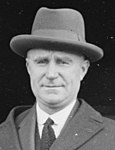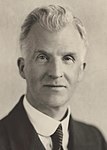
Back Elecciones federales de Australia de 1931 Spanish Élections fédérales australiennes de 1931 French
| |||||||||||||||||||||||||||||||||||||||||||||||||||||||||||||||||||||||||||||
All 76[b] seats of the House of Representatives 38 seats were needed for a majority in the House 18 (of the 36) seats of the Senate | |||||||||||||||||||||||||||||||||||||||||||||||||||||||||||||||||||||||||||||
|---|---|---|---|---|---|---|---|---|---|---|---|---|---|---|---|---|---|---|---|---|---|---|---|---|---|---|---|---|---|---|---|---|---|---|---|---|---|---|---|---|---|---|---|---|---|---|---|---|---|---|---|---|---|---|---|---|---|---|---|---|---|---|---|---|---|---|---|---|---|---|---|---|---|---|---|---|---|
| Registered | 3,649,954 | ||||||||||||||||||||||||||||||||||||||||||||||||||||||||||||||||||||||||||||
| Turnout | 3,286,474 (95.04%)[a] ( | ||||||||||||||||||||||||||||||||||||||||||||||||||||||||||||||||||||||||||||
| |||||||||||||||||||||||||||||||||||||||||||||||||||||||||||||||||||||||||||||
 Results by division for the House of Representatives, shaded by winning party's margin of victory. | |||||||||||||||||||||||||||||||||||||||||||||||||||||||||||||||||||||||||||||
| |||||||||||||||||||||||||||||||||||||||||||||||||||||||||||||||||||||||||||||

The 1931 Australian federal election was held on 19 December 1931. All 75 seats in the House of Representatives and 18 of the 36 seats in the Senate were up for election.
The incumbent first-term Australian Labor Party (ALP) government led by Prime Minister James Scullin was defeated in a landslide by the United Australia Party (UAP) led by Joseph Lyons. As of 2024, this is the last time that a sitting government at federal level has been defeated after a single term.
The election was held at a time of great social and political upheaval, coming at the peak of the Great Depression in Australia. The UAP had only been formed a few months before the election, when Lyons and a few ALP dissidents joined forces with the Nationalist Party and the Australian Party. Although it was dominated by former Nationalists, Lyons became the merged party's leader, with Nationalist leader John Latham as his deputy.
Scullin's position eroded further when five left-wing Labor MPs from New South Wales who supported NSW Premier Jack Lang broke away and moved to the crossbenches in protest of Scullin's economic policy, reducing Scullin to a minority government. Late in 1931, they supported a UAP no-confidence motion and brought down the government. The two Labor factions were decimated; massive vote-splitting left them with only 18 seats between them (14 for the official ALP and four for the Langites).
Prior to the election, it was assumed that the Country Party, led by Earle Page, would hold the balance of power, and Page tentatively agreed to support the UAP if that were the case. The two parties campaigned separately and stood candidates against each other in the House of Representatives, but ran joint tickets in Senate. However, the UAP came up four seats short of a majority. The five MPs from the Emergency Committee of South Australia, which contested the election in that state in place of the UAP and Country Party, joined the UAP party room, giving the UAP enough numbers to form a majority government by two seats. Page was still willing to form a coalition with the Country Party, but negotiations broke down and Lyons decided the UAP would govern by itself. As a result, the First Lyons Ministry was composed solely of UAP members.[1]
Labor spent the next 10 years in opposition; it did not return to power until 1941.
Cite error: There are <ref group=lower-alpha> tags or {{efn}} templates on this page, but the references will not show without a {{reflist|group=lower-alpha}} template or {{notelist}} template (see the help page).
© MMXXIII Rich X Search. We shall prevail. All rights reserved. Rich X Search



